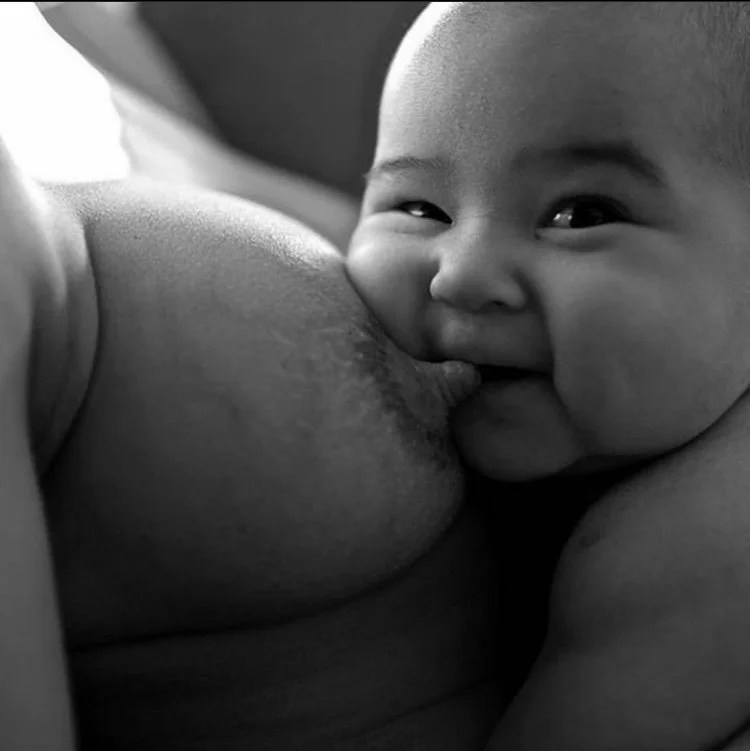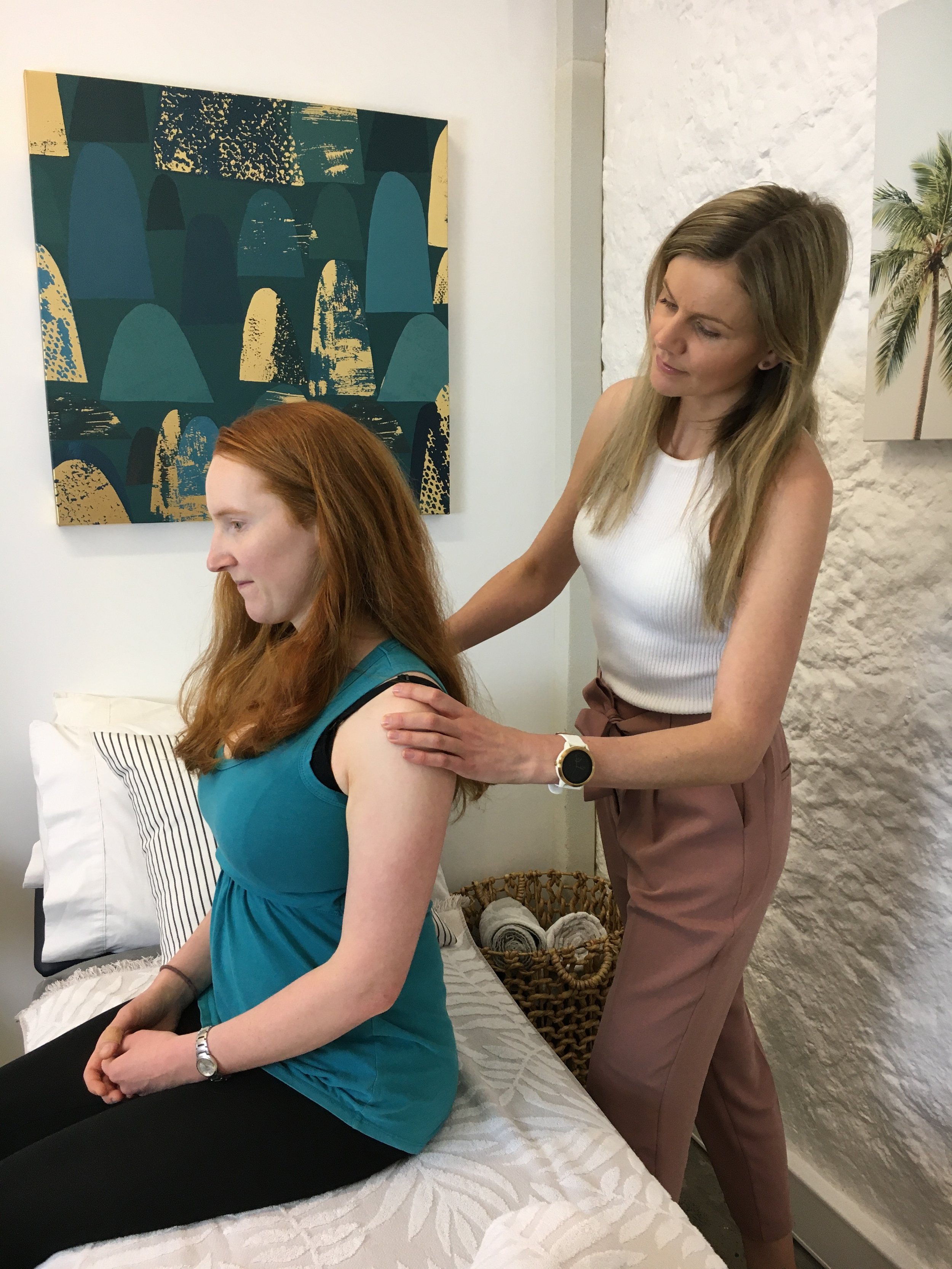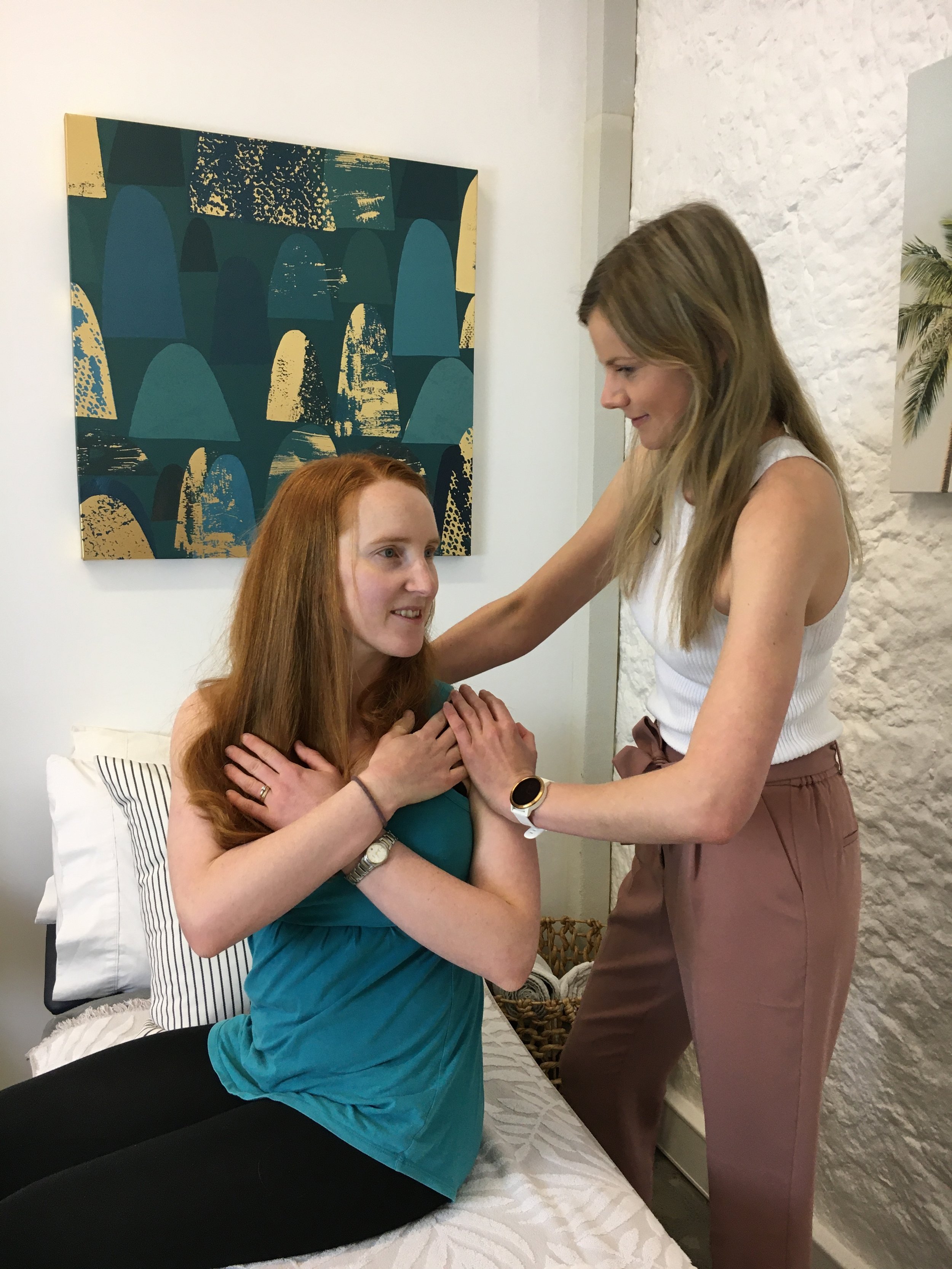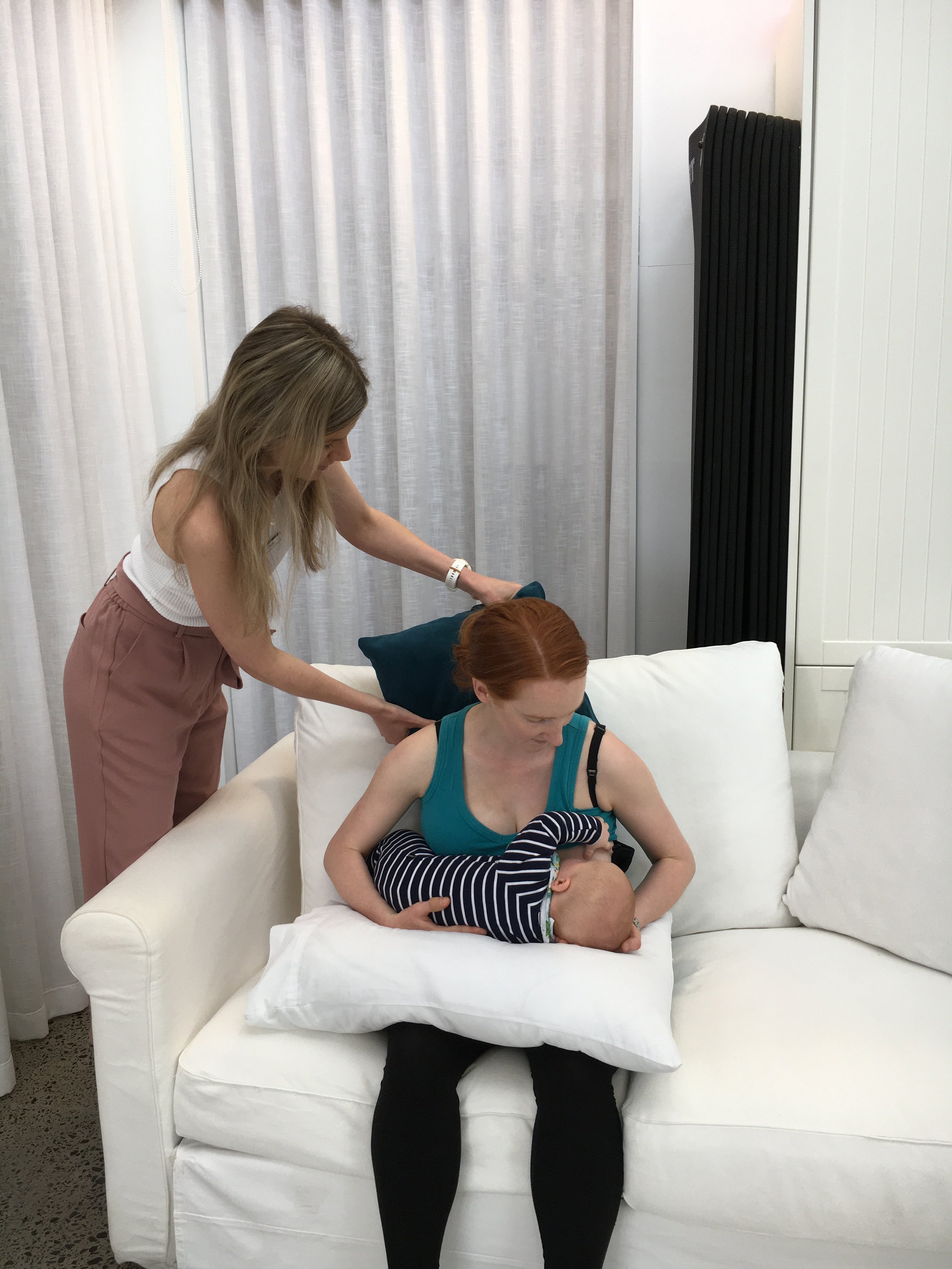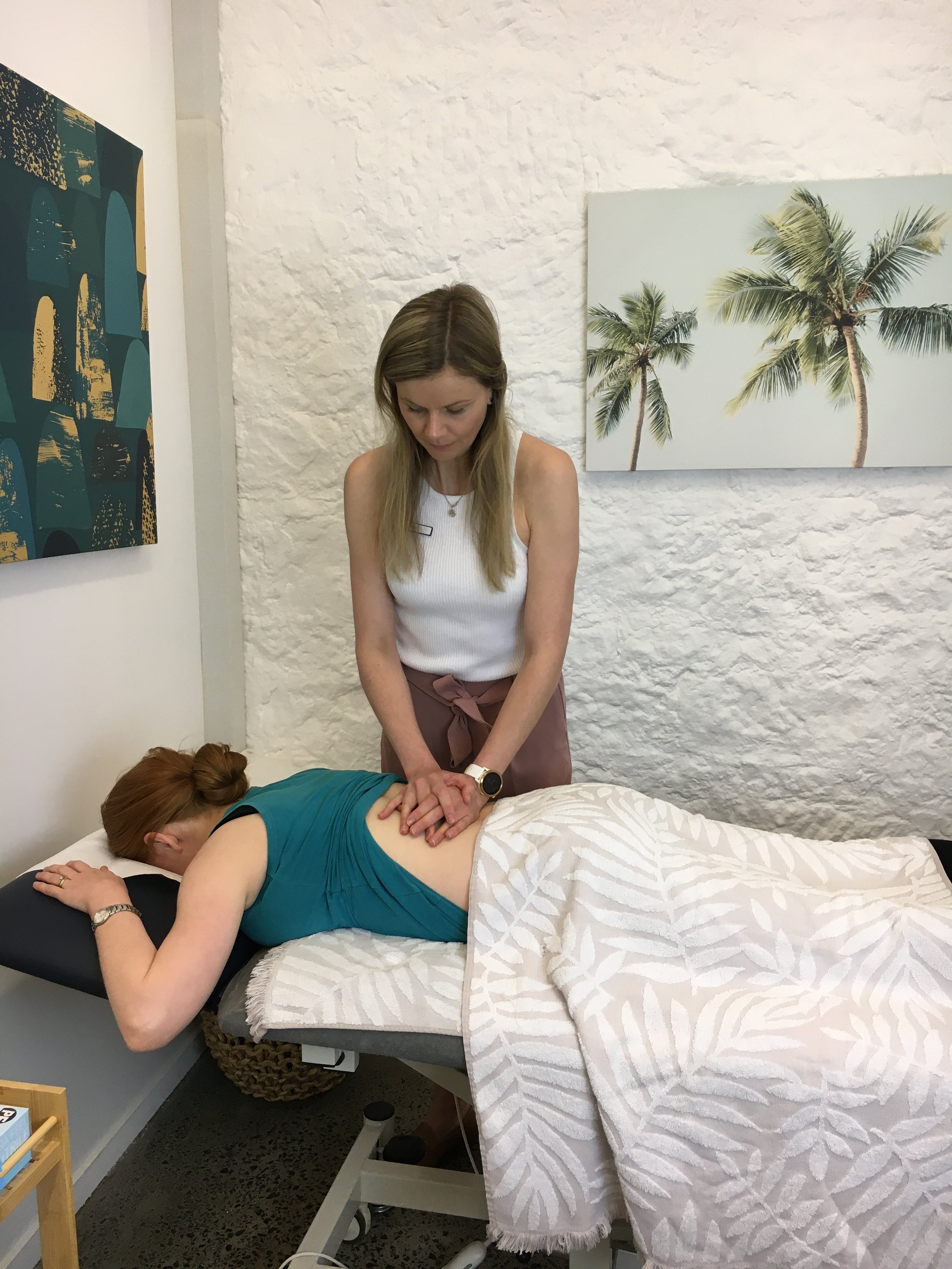Breastfeeding Tips and Tricks
Breastfeeding Tips and Tricks
Breastfeeding
Breastfeeding is widely regarded to offer a range of health benefits for new bubs, and despite the many challenges it can be a joyous bonding experience. The World Health Organisation recommends children be exclusively breastfed for the first 6 months of life, up to 2+ years (WHO 2021). A range of studies have also shown that breastfeeding can improve long term cardiovascular health and reduce ovarian cancers in women (Nyugen et al. 2019: Da-Peng Li et al 2014). Further studies have shown that women who breastfed induced better cognitive performance, including executive function, recall and processing speed (Fox et al. 2021). This information tells us that learning to breastfeed is an important skill, but we also acknowledge that there are times when you may need additional support.
Physiotherapy can be a wonderful tool to help women achieve their breastfeeding goals from the management of mastitis and blocked ducts to reducing aches and pains when feeding.
Blocked Duct & Mastitis
A duct can become blocked and breast milk can build up behind this blockage causing a palpable lump in the breast tissue.
Mastitis can occur when this breast tissue becomes inflamed.
Blocked ducts/mastitis that can occur for a variety of reasons: including poor attachment, long periods between breastfeeds, nipple damage, compression from clothing, ceasing breastfeeding too quickly.
Symptoms:
According to the Australian Breastfeeding Association, the following symptoms are often indicators of mastitis:
Shivers & aches, similar to the early onset of flu symptoms
Breast tenderness or warmth to the touch
Shiny or red streaks on skin of breast tissue
Sense of unease and illness - Feeling ‘off’
Thickening of breast tissue, or a breast lump
Discomfort or nipple discharge
Breast swelling
Managing blocked ducts/Mastitis
If you suspect a blocked duct or mastitis, you should prioritise regular rest, avoid restrictive clothing, and seek medical advice early from your GP and/or lactation consult.
Your postnatal physiotherapist can also assist you with the use of therapeutic ultrasound, gentle effleurage/massage to the affected breast, breastfeeding and postural advice.
Top TIPs for managing mastitis
- Loosen or take off your bra
- Use warmth before a feed to help clear blockages by encouraging the let-down reflex. You could have a warm shower, use a well-covered hot water bottle or a warm towel
- Reduce inflammation with gentle self massage/effleurage
- Continue to feed from the effected breast to assist with drainage
- When feeding start with the affected side first, offering it more frequently than usual
- Try feeding in different positions eg. football hold (pictured) or on all fours
- Use cold packs after a feed. This can help relieve pain and reduce inflammation
Relaxed comfortable feeding is incredibly important to ensure breastfeeding continues to be an enjoybale experience.
One of the most common complaints we see from new mothers is postural related discomfort.
Here are a few simple things you can put into place to help relieve your postural aches and pains while nursing.
- Take note of your posture: sitting in a hunched over position can strain your neck and upper back. While there is no ‘right’ or ‘wrong’ position to feed your baby, it’s worth trying to feed in various positions. Not only will this help prevent musculoskeletal problems related to muscle tightness or overuse, it can also help drain your breast more effectively and help prevent blocked ducts
- Use pillows for support: propping baby on a pillow can help support their weight. Hot tip: use a waterproof pillow case liner, or a towel over your pillow. Breastfeeding can be messy business!
- Get yourself a massage: a massage is a great way to loosen tight muscles and get things moving. The Pelvic Studio offer remedial massage services for your convenience
- Get back into exercise: Your physiotherapist can personalise an exercise routine working on strength and mobility to support your breastfeeding journey. The Pelvic Studio offers small group exercise classes which are tailored to the needs of postnatal bodies
- STRETCH! Stretching is great natural pain relief. See our chest and upper back mobility series for some stretches to get your body moving
Some mothers might like to try feeding in sidelying, check out our guide here.
Our physiotherapy team are experts in postnatal recovery and are here to help you through your journey. We recommend a standard postnatal check at 6 weeks post birth, however if you are experiencing blocked duct/mastitis symptoms, or find that breastfeeding is causing aches and pains, we can offer advice and treatment sooner.
We know adjusting to new born life is a beautifully chaotic time, so for your convenience, physiotherapy assessments can be made online HERE or by emailing info@thepelvicstudio.com. You can also call us on 6224 7195.
The information in this blog is courtesy of the following sources:
Australian breastfeeding association (2019). Australian Breastfeeding Association. [online] Australian Breastfeeding Association. Available at: https://www.breastfeeding.asn.au/.
Fox, M., Siddarth, P., Oughli, H.A., Nguyen, S.A., Milillo, M.M., Aguilar, Y., Ercoli, L. and Lavretsky, H. (2021). Women who breastfeed exhibit cognitive benefits after age 50. Evolution, Medicine, and Public Health, 9(1).
Li, D.-P., Du, C., Zhang, Z.-M., Li, G.-X., Yu, Z.-F., Wang, X., Li, P.-F., Cheng, C., Liu, Y.-P. and Zhao, Y.-S. (2014). Breastfeeding and ovarian cancer risk: a Systematic review and meta-analysis of 40 epidemiological studies. Asian Pacific Journal of Cancer Prevention, 15(12), pp.4829–4837.
Nguyen, B., Gale, J., Nassar, N., Bauman, A., Joshy, G. and Ding, D. (2019). Breastfeeding and cardiovascular disease hospitalization and mortality in parous women: Evidence from a large Australian cohort study. Journal of the American Heart Association, 8(6).
World Health Organisation (2021). Breastfeeding. [online] www.who.int. Available at: https://www.who.int/health-topics/breastfeeding#tab=tab_2.

